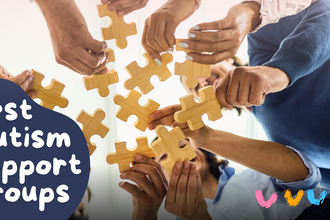
As a parent, you understand the importance of finding activities that entertain and support your autistic child’s development. For parents of autistic children, this task can present unique challenges. In this blog, we’ll explore why it can be difficult to keep autistic children occupied and provide practical tips and activities to help you understand this journey with ease.
Understanding the Challenges

Autism spectrum disorder (ASD) brings its own set of challenges when it comes to keeping children busy. Sensory sensitivities, communication difficulties, and limited interests are common among autistic children. Loud noises, bright lights, or certain textures can be overwhelming for them, making it hard to engage in typical activities.
Additionally, some autistic children may struggle with verbal communication, making it challenging for them to express their wants and needs. Limited interests or rigid routines can also narrow down the options for activities, making it hard to introduce new experiences. Understanding these challenges is the first step in finding effective ways to keep your autistic child busy and happy.
Step-by-Step Guide

1. Creating a Comfortable and Low-Distraction Play Environment
The first step in keeping your autistic child busy is creating a comfortable and low-distraction play environment. This means minimizing sensory overload by reducing loud noises, bright lights, and clutter. Choose a calm and quiet space in your home where your child can play comfortably. Consider using soft lighting, comfortable seating, and calming colors to create a soothing atmosphere. Remove any unnecessary distractions and clutter that may overwhelm your child.
2. Organize Toys and Encourage Communication
Next, organize toys and encourage communication with your child. Arrange toys in a way that is visually appealing and easily accessible. Consider using bins or shelves to categorize toys based on type or theme. Encourage your child to ask for specific toys or activities by using visual cues, gestures, or simple verbal prompts. This not only helps your child express their preferences but also promotes communication skills.
3. Introduce Changes in Play and Toys
To promote flexibility and adaptability in play, introduce changes in play and toys gradually. Start by adding new toys or activities to your child’s routine in small increments. Use visual schedules or social stories to prepare your child for upcoming changes or transitions. Encourage your child to explore new toys and activities at their own pace, providing support and encouragement along the way. Celebrate small successes and milestones as your child learns to adapt to changes in play and toys.
For more tips, check out How to engage child with autism at home
Activities to Keep Them Engaged

Sensory Activities
Sensory activities can provide a fun and engaging way for autistic children to explore their senses. Many activities can help regulate sensory input and promote engagement:
- Incorporating sensory bins in play
- Swinging
- Jumping
Providing options for sensory stimulation while also offering quiet retreat areas can help children with autism regulate their sensory experiences and feel more comfortable engaging in play.
Physical Activities
Physical activities are important for promoting gross motor skills and overall physical health. Engaging in regular physical activity can help reduce anxiety, improve mood, and enhance overall well-being. Encourage your child to engage in activities such as
- Bike riding,
- Swimming
- Outdoor play
These activities can help children improve coordination, balance, and strength while also providing sensory input and opportunities for social interaction.
Educational Activities

Educational activities can help support your child’s learning and development while keeping them entertained. The following are excellent options for promoting learning through play.
- Playing simple board games
- Reading illustration books
- Solving Puzzles
- Interactive storytelling activities
Moreover, we can incorporate learning objectives such as vocabulary building, counting, or social skills development into play activities. In this way, children can benefit from structured learning opportunities in a fun and engaging way.
Creative and Expressive Activities
Art and music can serve as therapeutic tools for children with autism to express themselves and explore their emotions. The following activities can promote self-expression and emotional regulation in autistic kids:
- Painting
- Sing-along sessions
- Dance routines
Technology Assisted Activities
Technology can be a valuable tool for engaging children with autism in play and learning activities. Educational apps and games tailored to specific interests and learning goals offer interactive and customizable experiences for skill development and engagement. Following are some apps and games you can use to keep your autistic kid busy while helping them develop better skills:
- Pictello (visual storytelling app)
- ABC Kids – Tracing & Phonics (learning skill)
- Aquapark.io (Racing game)
You can find a list of valuable apps and games for autistic kids at hopebridge.
Key Takeaway
Keeping your autistic child busy requires patience, creativity, and understanding. By creating a comfortable and low-distraction play environment and providing a variety of engaging activities, you can help your child thrive and enjoy their day-to-day experiences. Remember to celebrate your child’s accomplishments and don’t be afraid to seek support in your community. With love and support, you can help your autistic child lead a fulfilling and joyful life.
Become a part of Prideful on the Spectrum's community today where we spread awareness about the diverse spectrum of abilities in autistic individuals. Explore our carefully crafted toys and a clothing line that aims to celebrate differences and challenge stereotypes. Come and join hands in bringing a change- Explore now!







